Online Only 24/7/365 Based in Krabi Thailand.
Krabi
24/7
Monday-Sunday
12:00 am - 12:am
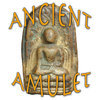
Pra Mongkol Maha Lap – Nang Phaya Khang Met (Side-Bead Type) 2499 BE / 1956 AD Mae Chee Bun Ruean Tong Bun Term with Solid Gold Casing (waterproof); The Pra Mongkol Maha Lap series of 2499 BE, consecrated in 1956 AD, is among the most important amulet issues connected to Mae Chee Bun Ruean Tong Bun Term, the revered lay nun whose meditative attainments and abhinya powers placed her in a unique position in the Thai Buddhist landscape of the twentieth century. Within this series, the Nang Phaya Khang Met type holds a central role, both for its distinctive design and for its material composition. Unlike other issues that were produced in pressed powders alone, the Nang Phaya Khang Met of 2499 was formed in a reddish-brown fired clay body mixed with sacred powders and ritual materials, giving the piece both durability and a unique textural identity that distinguishes it from Mae Chee Bun Ruean’s other celebrated productions, such as the Pra Puttho Noi powder tablets.
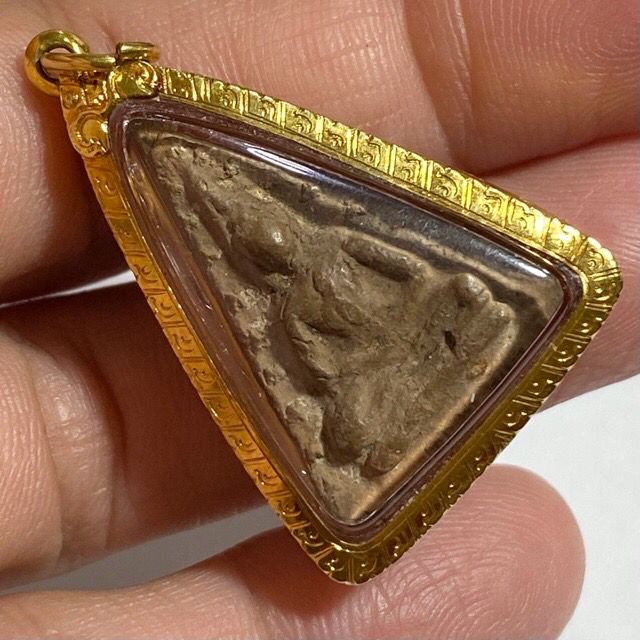
The historical context of this amulet issue is inseparable from the major religious events of the year 2499 BE. The series was commissioned in conjunction with the grand consecration of the Pra Puttopās Chinraj Jommuni, commonly referred to as Pra Yai, at Wat Sampantawongs in Bangkok. This principal Buddha image was subsequently enshrined as the presiding figure at Wat Saranat Tammaraam in Rayong. The ceremonies took place between the fifth and thirty-first of March, 1956, and Mae Chee Bun Ruean was intimately involved in both the production of the amulets and in their ritual empowerment. Her presence, combined with the presence of the foremost masters of the forest and central traditions of Thai Buddhism, lent to the amulets a prestige that has endured across generations.
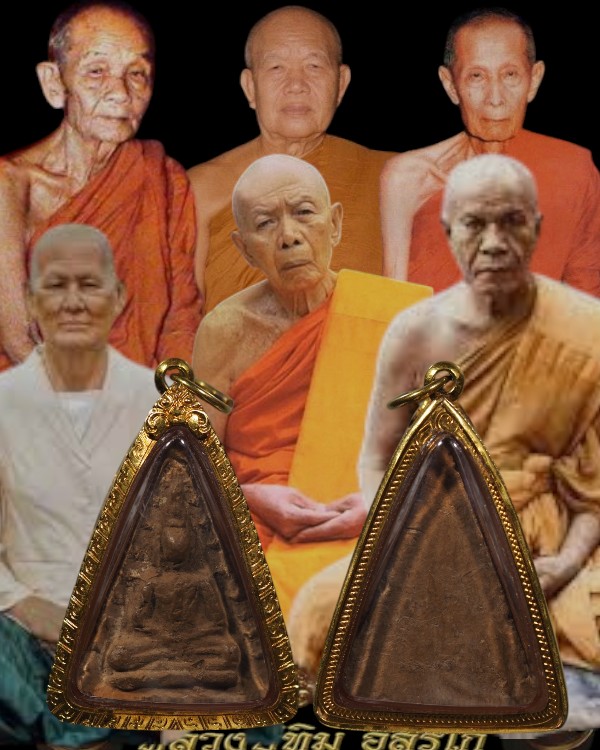
The presiding clerical organizer of the consecration was Pra Kroo Swadtarnkun Samajarn, known more widely as Luang Por Lee Dhammadharo of Wat Asokaram in Samut Prakan. Luang Por Lee, a senior disciple of Ajahn Mun Bhuridatto, was one of the leading exponents of the forest tradition in his generation, and his supervision of the empowerment ensured both doctrinal fidelity and a meditative depth of blessing. The roster of masters who participated reads like an honor roll of twentieth-century Thai Buddhism. Among them were Luang Pu Fan Acharo of Wat Pa Udomsomphon in Sakon Nakhon, Luang Pu Khao Analayo of Wat Tham Klong Phen in Udon Thani, Luang Pu Dulya Atulo of Wat Burapharam in Surin, Luang Pu Toh of Wat Pradoo Chimplee in Thonburi, Luang Por Sot of Wat Paknam Bhasicharoen in Thonburi, and Luang Por Ngern of Wat Don Yai Hom in Nakhon Pathom. These masters, each a towering figure in their own right, collectively ensured that the consecration was not a mere ritual formality but an infusion of living meditative power and spiritual authority.
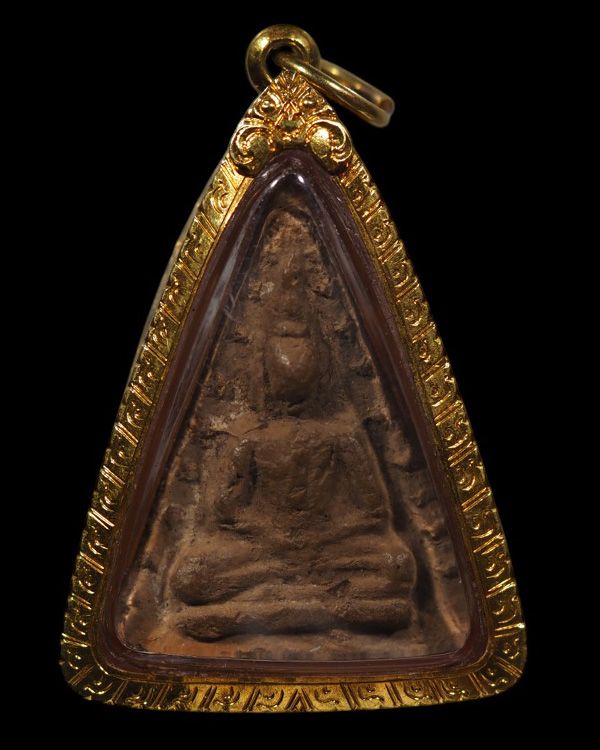
Beyond the ceremonies at Wat Sampantawongs, further sessions of empowerment were conducted at Wat Saranat Tammaraam in Rayong. These sessions extended across eighteen days and eighteen nights, an extraordinary length of time that attests to the seriousness with which the organizers approached the empowerment. The ceremonies in Rayong drew participation from regional masters, including Luang Pu Tim Isarigo of Wat Laharnrai, Luang Por Toh of Wat Khao Botong, Luang Por Lee of Wat Asokaram, and Ajahn Singh Khantayakhamo. The extended blessings ensured that the amulets carried not only the power of the central masters of Bangkok and Thonburi but also the austere and fierce energy of the forest tradition that radiated outward from Ajahn Mun’s lineage. The combined blessings forged a lineage of power that makes the Pra Mongkol Maha Lap set a cornerstone of Mae Chee Bun Ruean’s spiritual legacy.
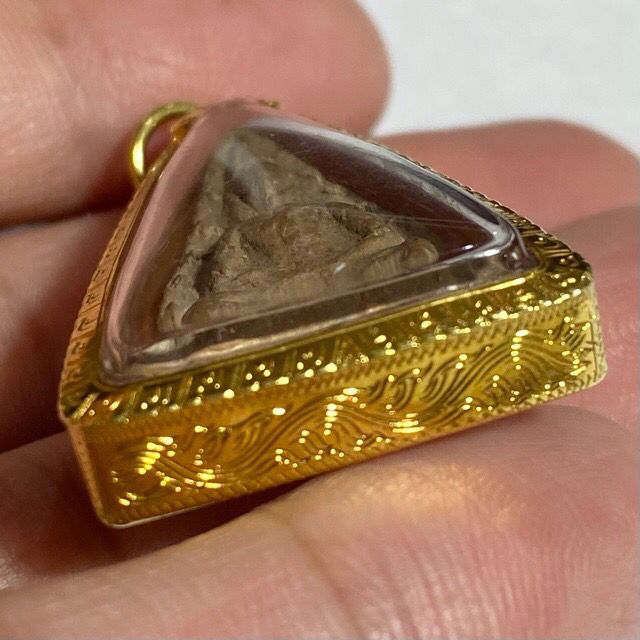
The Nang Phaya Khang Met mold itself is a distinctive somdej-style variant. The piece is rectangular to slightly triangular in form, depicting a seated Buddha in meditation posture, flanked by bead-like motifs at the sides, which lend the mold its name of Khang Met, meaning “side-beads.” The front displays the icon in simple relief, while the reverse is typically unadorned, with faint traces of mold impression or subtle yantra markings depending on the specific block used. Unlike some other molds of the 2499 series that bear sharp yantra stamps, the Nang Phaya Khang Met is often identifiable precisely by its restrained reverse, which provides a useful feature for authentication.
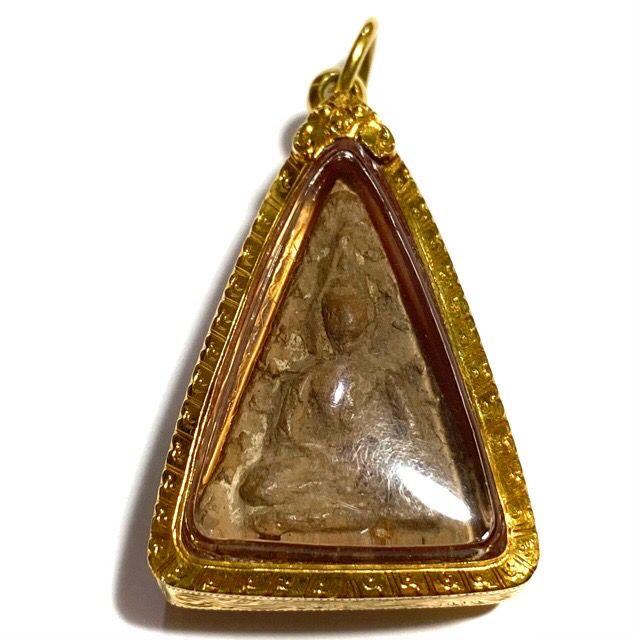
The material composition of the amulet is one of the key distinguishing features. Collector archives and surviving specimens attest to the fact that the Nang Phaya Khang Met of 2499 was produced in a reddish-brown fired clay body. The clay body, known as din pha, was mixed with sacred powders and ritual inclusions, then pressed into molds and fired to create a durable tablet. Under magnification, the clay reveals natural mineral grain, occasional inclusions, and the microscopic evidence of firing. The surface tones vary from reddish-brown to darker brown, sometimes exhibiting two-tone shading caused by kiln variation. This natural variation is one of the indicators of authenticity, since modern counterfeits often fail to reproduce the subtle chromatic irregularities of fired clay.

The muan sarn, or sacred materials, incorporated into the clay included soils and clays collected from temple grounds, powdered fragments of earlier amulets such as Somdej tablets, ritual ashes, and other sanctified ingredients. Reports suggest that remnants of Mae Chee Bun Ruean’s earlier productions, including powders associated with the Pra Puttho Noi series, may have been added to the mixture, thereby establishing a material continuity across her issues. Ritual soils collected from Buddhist holy sites in India, such as Lumbini and Bodhgaya, were also part of the admixture, further connecting the amulet to the sacred geography of Buddhism itself.
The decision to use fired clay rather than pure powder for this mold may have been practical as well as symbolic. Fired clay allowed for mass production of durable tablets, with some estimates suggesting that tens of thousands of pieces were created across the multiple molds of the 2499 series. The number often cited is 84,000, echoing the 84,000 dhamma khandhas (units of Dhamma teaching), but whether this figure is exact or symbolic remains debated. What is certain is that the production was large enough to distribute widely but limited enough to give rise to scarcity in pristine condition today.
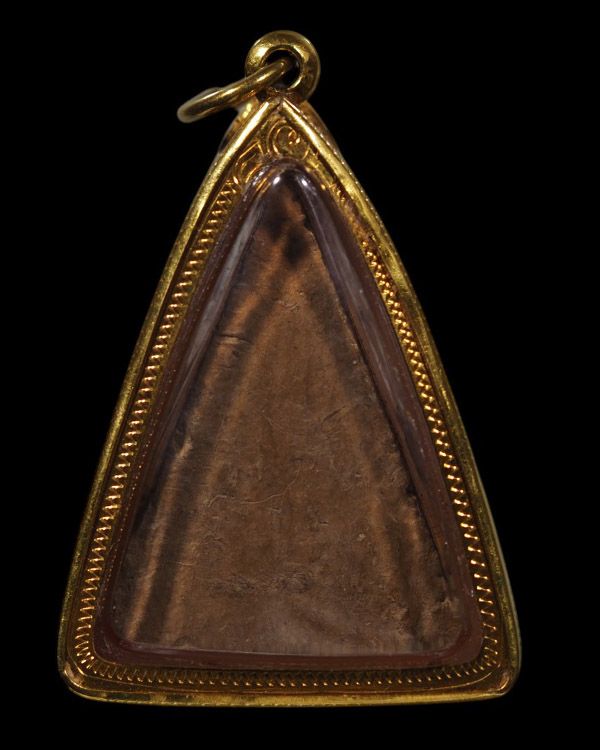
Authenticating a genuine Nang Phaya Khang Met requires careful attention to material, texture, and morphology. The first step is to examine the color and body of the amulet. Authentic examples display reddish-brown tones with natural mineral inclusions, while fakes often appear as white, cement-like, or resin-cast. The surface of genuine pieces is taut and dry, with micro-pitting and subtle patina, whereas counterfeits often exhibit artificial gloss, oily coatings, or over-darkened surfaces intended to mimic age. The bead detail along the sides in authentic pieces is slightly irregular, a byproduct of hand-pressed molds, while counterfeits tend to display mechanically perfect or unnaturally sharp repetition. The reverse of genuine amulets shows the natural shrinkage and impression of clay pressed and fired, with no signs of machine stamping. In contrast, many fakes bear artificially deep yantra stamps or perfectly flat backs, betraying modern reproduction.
Collectors often rely on magnification to distinguish genuine examples. Under a loupe, authentic clay reveals natural granular structure and mineral flecks, while fakes show fiber binders, casting bubbles, or uniform artificial texture. Provenance also plays a critical role, and pieces with recorded histories in older collections or auctions carry a higher assurance of authenticity. Because of the high frequency of forgery, the consensus among senior collectors is that uncertain specimens should always be examined by recognized experts.
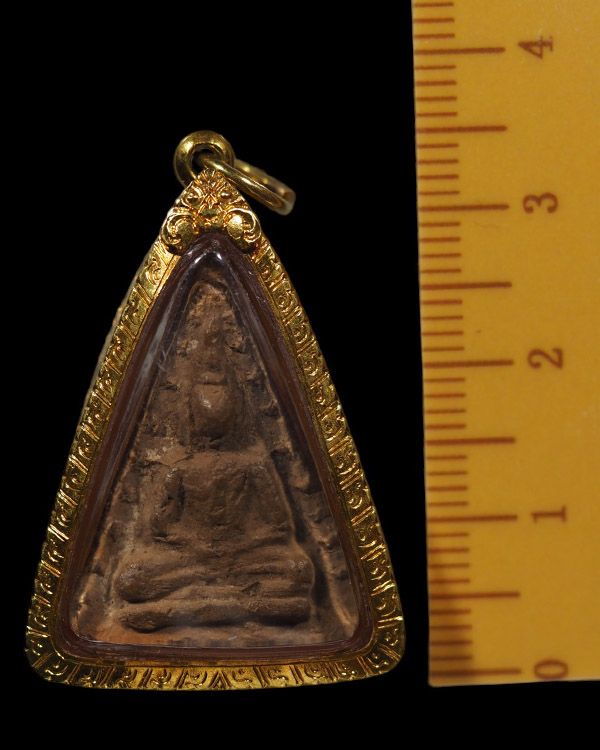
When comparing the Nang Phaya Khang Met with Mae Chee Bun Ruean’s other famous productions, particularly the Pra Puttho Noi issues of 2494 and 2516 BE (1951 and 1973 AD), important distinctions emerge. The Pra Puttho Noi tablets are powder-based amulets, pressed from pong phutthakun and pong itthije powders, producing a chalky body in lighter tones of white or beige. They are fragile, often showing crumbling edges or powder exfoliation. By contrast, the Nang Phaya Khang Met’s fired clay gives it a firm ceramic-like feel and long-term durability. While the Pra Puttho Noi enjoys great fame for its spiritual potency and association with Mae Chee Bun Ruean’s peak meditative period, the 2499 clay series is considered equally powerful but materially distinct. Collectors who specialize in Mae Chee Bun Ruean often pursue both series, regarding them as complementary manifestations of her spiritual influence, one expressed in powder and the other in clay.
The authenticity issues between these two series also diverge. Fakes of the Pra Puttho Noi often involve modern powders and resins, dyed to mimic age, while fakes of the Nang Phaya Khang Met often involve cement-based reproductions or resin-cast copies painted to resemble clay. Each type of forgery carries tell-tale signs that can be discerned by a trained eye, but the differences between the genuine clay body of the 2499 issue and modern cement mixes are stark when examined under magnification.
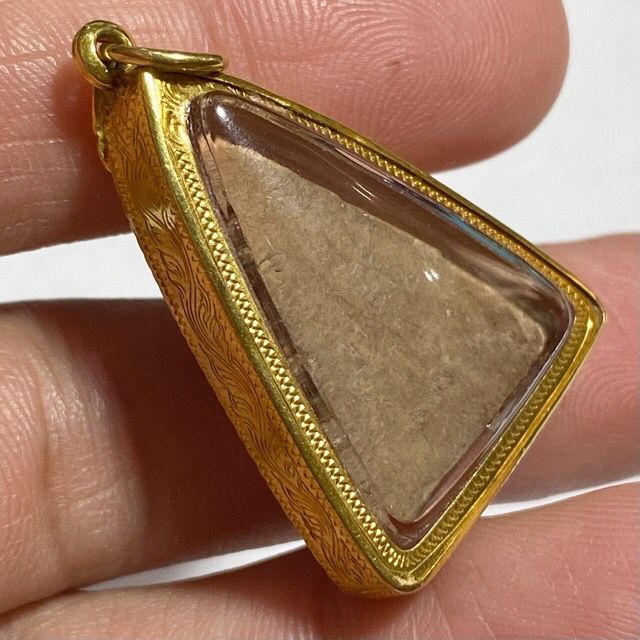
Another aspect worth noting is the symbolic intent behind the Pra Mongkol Maha Lap series. The name “Mongkol Maha Lap” translates to “Great Auspicious Fortune.” This was not a casual naming but reflected the purpose of the amulets as both protective and prosperity-bestowing. In the Thai cultural imagination, such amulets are not mere objects but vessels of spiritual charisma, carrying the barami (spiritual power) of the masters who consecrated them. The fact that Mae Chee Bun Ruean herself presided over the making, combined with the presence of over one hundred revered monks at the consecration, ensures that the amulets are perceived not only as protective but as a nexus of spiritual energy.
The prestige of the Nang Phaya Khang Met is also tied to the gendered associations of the Nang Phaya type. In Thai amulet typology, Nang Phaya tablets are often connected to female power, charm, and protective grace. The incorporation of this mold into the Mongkol Maha Lap series, under the direction of a female ascetic of Mae Chee Bun Ruean’s stature, gives the piece a unique symbolic resonance. It represents not only auspicious fortune but also the blending of feminine spiritual agency within a predominantly male monastic domain.
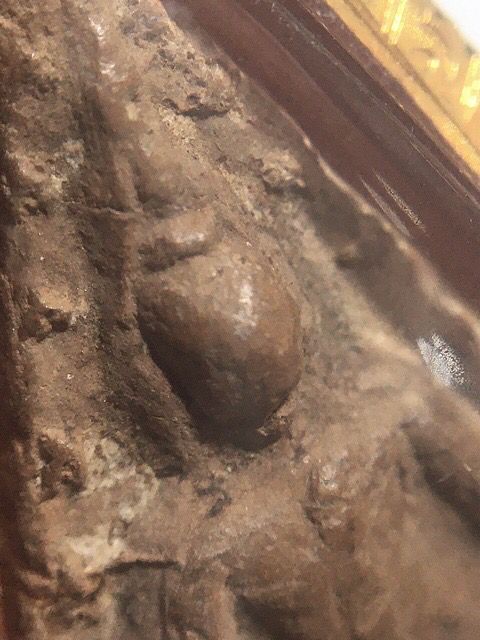
For the collector and the academic alike, the significance of the 2499 Mongkol Maha Lap Nang Phaya Khang Met lies in several converging factors: its connection to one of Thailand’s most revered female ascetics, its consecration in one of the largest assemblies of the twentieth century, its unique fired clay body that differentiates it from other Mae Chee Bun Ruean issues, and its enduring reputation as a bringer of auspicious fortune. These converging elements make it not merely a collectible artifact but a piece of Thai Buddhist history encapsulated in clay.
The images of genuine examples reveal further features that aid in understanding. The reddish-brown coloration, the visible grain of the clay, the micro-fissures that arise naturally in fired earthen material, and the slightly irregular bead motif all bear witness to authenticity. Each authentic amulet carries the subtle imperfections of hand production, the idiosyncrasies of kiln firing, and the passage of time. These features are not flaws but signs of reality, standing in contrast to the too-perfect surfaces of counterfeits. The authenticity of the Nang Phaya Khang Met thus lies as much in its imperfections as in its design.
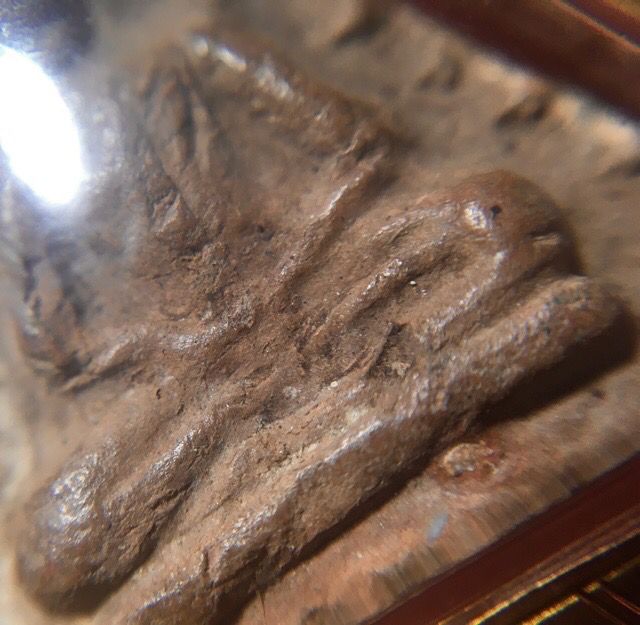
In conclusion, the Pra Mongkol Maha Lap – Nang Phaya Khang Met of 2499 BE / 1956 AD occupies a singular place in the lineage of Mae Chee Bun Ruean Tong Bun Term. It stands as one of her most celebrated creations, embodying the combined spiritual potency of the greatest masters of her time and the unique charisma of a lay nun who had attained the highest levels of meditative absorption. Its reddish-brown fired clay body anchors it materially in the earth while its consecration ties it spiritually to the heavens. For collectors, it is both a challenge and a reward, requiring knowledge and discernment to authenticate but offering a tangible connection to the sacred once recognized. For the academic, it represents an artifact through which to study the intersection of gender, ritual, and material culture in twentieth-century Thai Buddhism. And for the devotee, it is a vessel of mongkol and maha lap, auspiciousness and great fortune, carrying forward the living legacy of Mae Chee Bun Ruean into the present day.
The final two paragraphs, “How to authenticate” and “Quick checklist” have been combined below for a better reading flow.
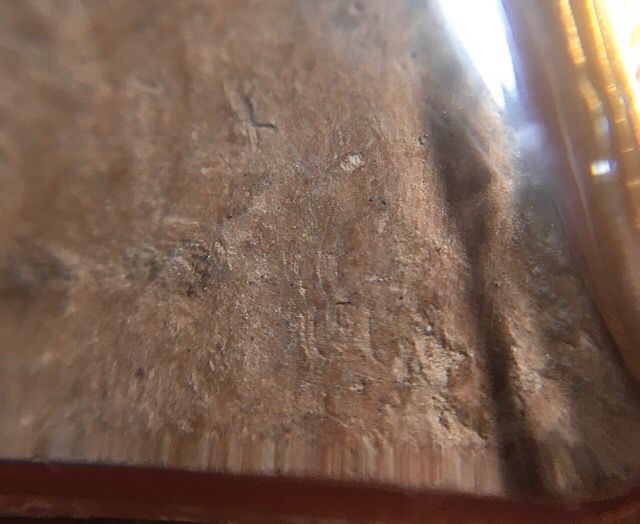
Because the 2499 Nang Phaya Khang Met is frequently copied, use a combined inspection approach—never rely on a single rule.
Color & Body: An authentic piece will be reddish-brown fired clay with a mineral grain, whereas fakes often appear bright white, uniformly black, or have a cement-like feel.
Surface Texture: Genuine examples have natural earthen patination, micro-pitting, and occasional micro-flakes. Fake red flags include uniform sanding, a glossy "aged" paint, or oily/artificial surface treatments.
Bead Detail (khang met): Authentic bead forms are slightly irregular due to hand-pressing. Counterfeits tend to have mechanically perfect or identical repeats across multiple specimens.
Back Surface / Mold Depression: A real piece will have a softly pressed back with natural shrink lines from firing. Fakes often show mechanical stamping, an overly deep yantra, or a perfectly flat reverse.
Edges & Fired Marks: Authentic earthen pieces show natural edge rounding and tiny kiln effects. Casts or modern copies often show seam lines, uniform edges, or repeated mold artifacts.
Magnification: Under a loupe, authentic clay reveals its natural granular structure and mineral specks. Cement or resin fakes, in contrast, will reveal binder fibers or air bubbles.
Provenance: Prefer pieces with long dealer records, photos in older catalogs, or trusted auction history.
Expert Opinion: When in doubt, obtain an assessment from a recognized specialist who has handled original 2499 specimens.
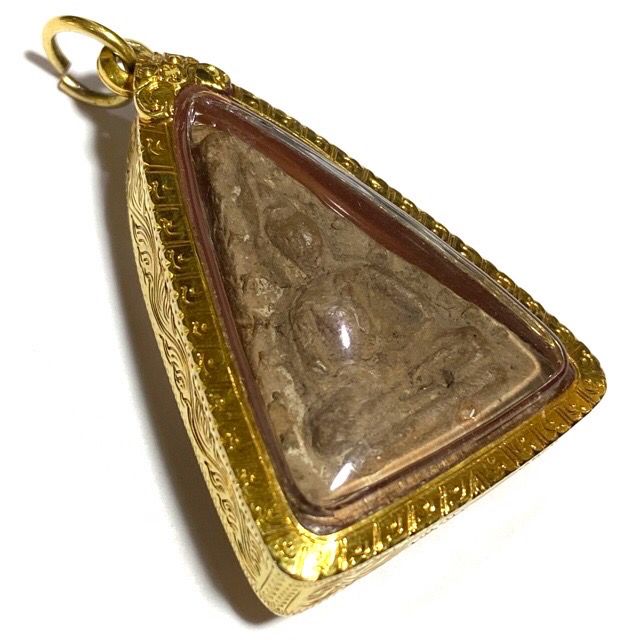
| Feature | Nang Phaya Khang Met (2499) — clay type | Pra Putto Noi — powder issues |
|---|---|---|
| Typical body | Reddish-brown fired clay (din pha) mixed with sacred powders | Mixed sacred powders (pong phutthakun, pong itthije, temple soils, and admixtures), appearing in white, cream, gray, and reddish-brown tones |
| Surface feel | Firm, ceramic-like, natural clay patina | Powder-compressed body, often compact but less ceramic than fired clay; surface can be smooth, grainy, or slightly chalky depending on mixture |
| Back | Softly pressed, natural shrink lines from firing | Pressed powder textures, sometimes with visible compression lines; coloration may vary across batches |
| Detail retention | Clay body holds moderate detail, softened edges after firing | Powder issues can preserve sharp facial/yantra detail when mix is fine; coarser mixes show more grain |
| Common fakes | Cement/resin recasts, re-fired imitations | Cement-powder reproductions, resin casts, artificially dyed copies |
| Best test methods | Inspect clay grain, firing marks, edge wear, loupe study, provenance | Inspect powder texture, coloration variants, compression marks, loupe study, provenance |

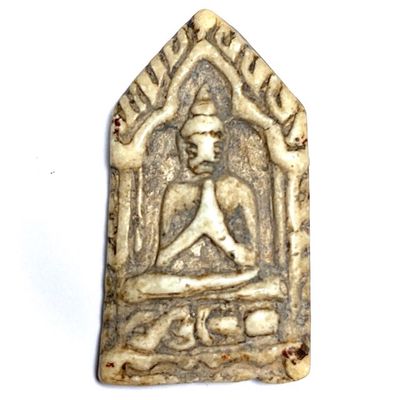
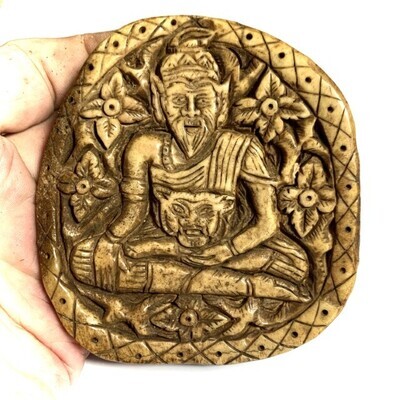
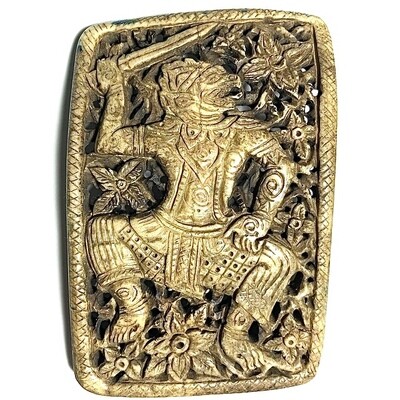
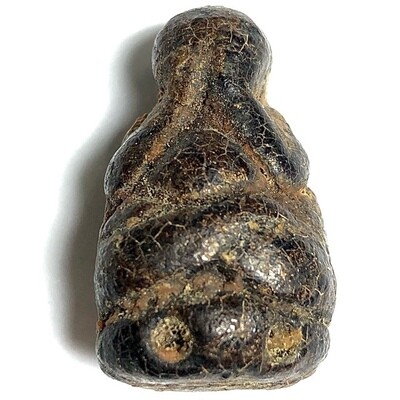
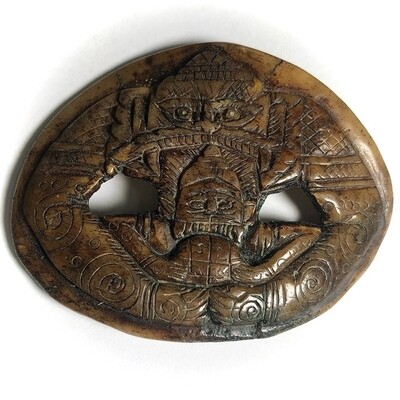
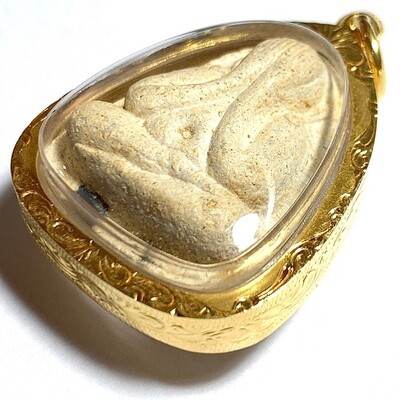
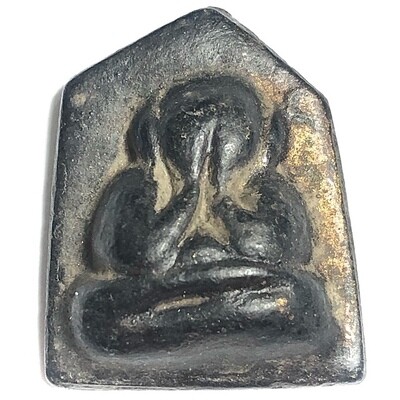
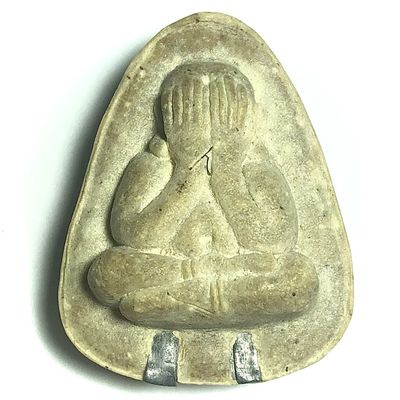
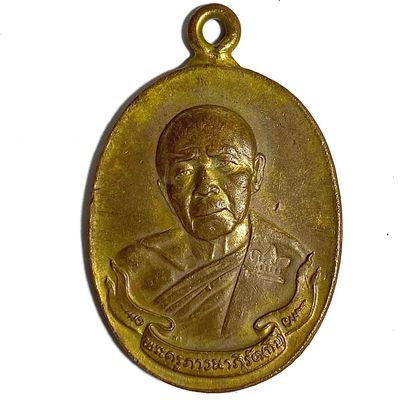
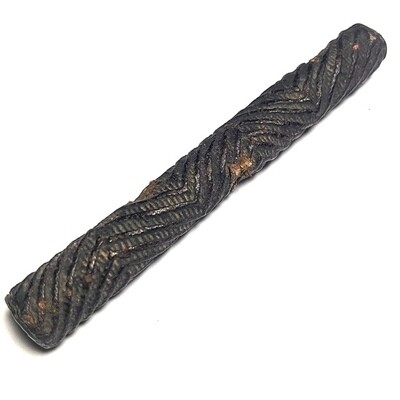
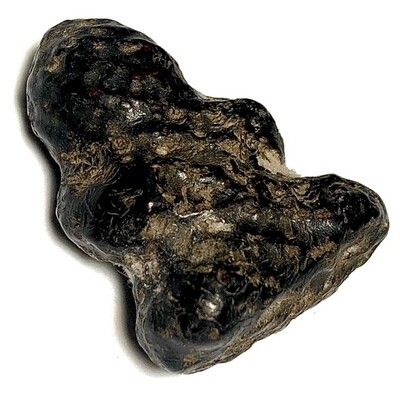
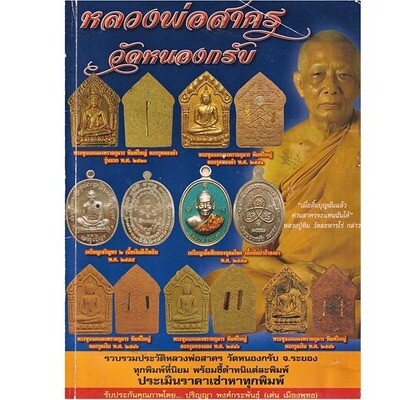
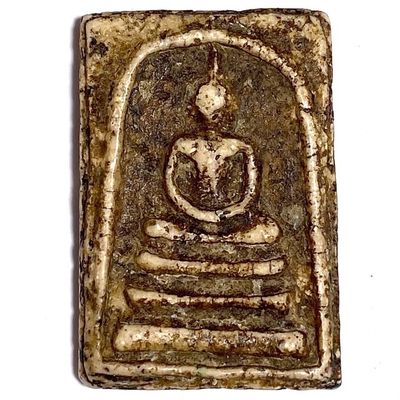
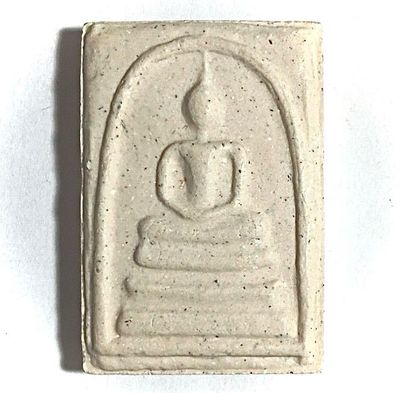
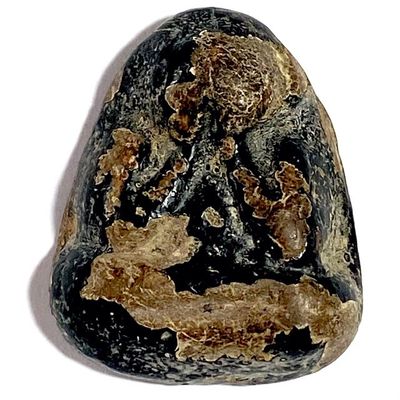
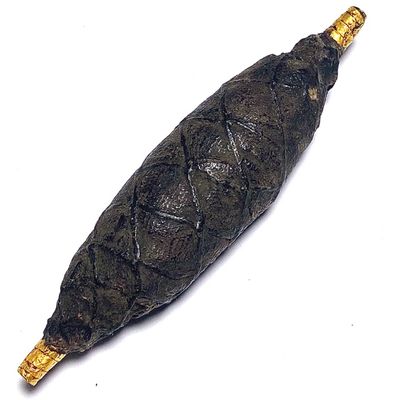
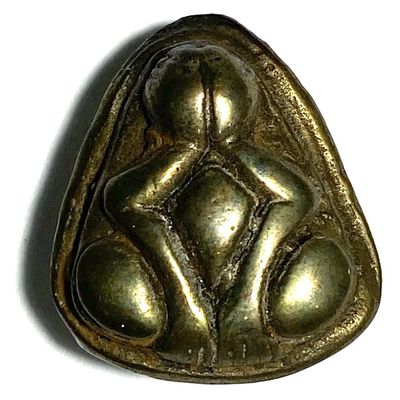
Because we guarantee delivery or money back/replacement, and Guarantee Authentic with real Blessings with all our amulets. Postage is Free Worldwide for all orders amounting to under 300 grams (60 grams for USA and Canada). We give Gifts with all orders large or small. Buying is Easy with our Secure Payment Gateway using Debit, Credit Card or Paypal, with customer protection built in by Paypal. Guaranteed Satisfaction with our 'You Can't Lose' policy, where we guarantee you that your item will be delivered, or if not, we replace or refund you. It is impossible to lose when you choose Us as your trusted supplier of Thai Buddhist Amulets and Occult Charms.
Good Service, only authentic amulets, and very Generous to customers, who always receive a nice gfift with every order! highly appreciated. Ajarn Spencer's knowledge induces great trust in the authenticity of the amulets in store


Ajarn Spencer
Author and Mystic
Ancient Amulet is Owned by Thai Buddhism and Occult Author, Ajarn Spencer Littlewood, who Guarantees Our Service with His Name. If there is one thing for which Ajarn Spenceris publicly known for, it is his Honesty, and his liking to Practice Generosity, which is one of the reasons Ancient Amulet has a rule that all customers receive minimum one free gift (amulet) of value with every order.
Online Only 24/7/365 Based in Krabi Thailand.
Krabi
24/7
Monday-Sunday
12:00 am - 12:am